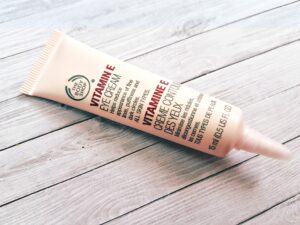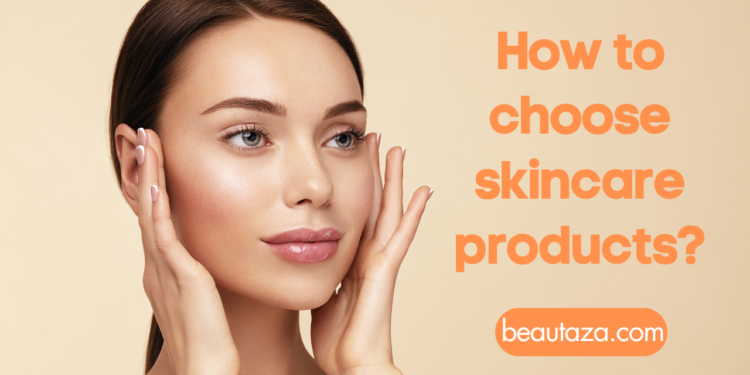
I will discuss How to choose skincare products? It might seem like reading a foreign language when researching skincare components unless you have a background in Latin or a chemical degree. An organization is dedicated to standardizing the language of component names used on global labels; they call themselves the International Nomenclature of Cosmetic Ingredients (INCI).
To make things easier for the average consumer, the more familiar term is often included in parenthesis after the scientific name, as in tocopherol (vitamin E). With that prompt, an ingredients list may appear like a collection of lengthy, foreign terms separated by commas.
It is essential to take a personalized approach to selecting skincare products with the proper elements for your skin. Putting in the additional effort and time required for this is worthwhile.
Thankfully, we de-mystified the procedure by consulting with dermatologists. With this information, you may purchase confidently and avoid reactionary skin tragedies while trying new products.
How to choose skincare products?- Recognize your skin type.
Cosmetic dermatologist Dr. Michele Green believes skin type is the most critical factor in selecting skincare products.
Acne-prone and sensitive skin types must be most cautious while selecting a skincare routine. While other skin types may experience breakouts or discomfort from certain compounds, oily skin is more resilient. La Roche-Posay’s Effaclar Mat Mattifying Moisturizer is ideal for acne-prone, oily skin.
Dr. Green recommends the following components for various skin types:
If you have oily skin, search for products that include alpha hydroxy acids, benzoyl peroxide, and hyaluronic acid. When combined, “These elements help regulate oil production, and hyaluronic acid hydrates just where it’s required,” as outlined by Dr. Green. CeraVe Renewing SA Cleanser is a low-priced face cleanser for oily skin that contains salicylic and hyaluronic acids.
Look for shea butter and lactic acid in skin care products if your skin is dry. For dry skin, “these ingredients provide hydration and mild exfoliation to keep dry skin looking radiant,” as Dr. Green puts it.
Products like aloe vera, oatmeal, and shea butter are good choices for sensitive skin. “They effectively hydrate the skin and seldom cause breakouts,” Dr. Green adds of these products. If you have dry, sensitive skin and want a body wash containing shea butter, I highly recommend La Roche-Posay’s Lipikar Wash AP+.
See a dermatologist if you need clarification on your skin type is best. Once you identify your skin type, you can begin making educated product choices.
How to choose skincare products?- Do not believe the hype.
According to Dr. David, “packaging and popularity are sometimes easy traps,” and neither should be given much consideration when choosing skin care products. Consider a friend or influencer’s pre-product skin while considering their advice. That will provide more accurate information about the product’s potential usefulness.
Customers have sued St. Ives Apricot Scrub and Mario Badescu creams for severe reactions. These products in your bathroom cabinet aren’t necessarily hazardous. Popular skincare brands and products have been criticized, reminding us that popularity doesn’t always mean quality.
No matter how many stars or happy customers a product has, it is always better to check the ingredients before buying.
How to choose skincare products?- Try to find these components.
Dr. David refers to glycerin as “the backbone” of moisturizing ingredients.
Human skin moisturizes using ceramides and hyaluronic acid. Dr. David prefers serum hyaluronic acid and lotions with glycerin and ceramides.
Vitamin C, or l-ascorbic acid, is an antioxidant that may repair UV-induced damage and boost collagen formation.
Tocopherol (Vitamin E): Vitamin E has many of the same benefits as vitamin C and is much more effective when used together. In Augustinus Bader’s, you may get a high-end hand lotion containing Vitamin E, glycerin, and shea butter.
Retinol is an essential element to look for in nighttime skincare products. It helps with cell turnover and collagen production.
Niacinamide (Vitamin B3) is a beautiful oil-controlling, skin-hydrating, and tone-balancing ingredient.
Do not use these components.
Perfumes and other smells may irritate and even induce allergic reactions in those with sensitive skin.
Sulfates are often used in shampoos and body washes as a cleaning ingredient. They are drying to the hair and skin and may even cause damage.
Manufacturers typically add parabens as chemical preservatives to items to stop the development of microorganisms. Experts like Dr. David have labeled them estrogen mimickers because of their potential to disrupt hormonal homeostasis and cause damage. Dr. David and Dr. Green stress the potential danger this poses to young children and those with a higher chance of developing breast cancer.
Formaldehyde and formaldehyde releasers: Formaldehyde is no longer often included as an ingredient since it is considered a carcinogen. Dr. David warns that these components may cause allergic responses in specific individuals, even though he cannot show they are harmful when handled in this manner.
Be aware that “natural” is not necessarily “better.”
Seeing recognizable names on the ingredient list is reassuring, but that doesn’t necessarily mean it’s the safest option. Dr. David gives the example of poison ivy, which has a natural oil but differs from one you would want to apply topically. It’s another case of “Since you, specifically, are an individual and must choose your own best interests,” Dr. David says, adding that he sees patients fairly often who have had adverse responses to natural essential oils.
She adds that “natural” and “organic” designations may be marketing ploys. Such words may seem promising but ultimately provide something with regulation and industry-specific norms.
In addition, a product’s “natural” designation may apply to just a tiny subset of its components.
Take care with the sequence of your components.
Once you’ve narrowed your choices to critical items, you can start paying attention to their placement on the list. Dr. David says the first five components on a label are usually the most telling since they make up around 80% of the product.
If any of the first five components are irritating or bothersome, discontinue using the product.
If a product’s components are mentioned last, you should generally search elsewhere. Due to their modest quantities, the parts near the end of the list won’t benefit.
Be bold about the lengthy list of ingredients.
As children, we trained many of ourselves to choose foods with shorter, more recognizable ingredient lists. While a shorter list of ingredients may be simpler to read, you may need more than this for your skincare needs.
Products with anti-aging characteristics or medical-grade quality will inevitably have a more extensive list of components. And it is something that Dr. David believes shouldn’t stop you. Instead, get assistance deciding whether the product is suitable from a dermatologist or some automated system.
Always do a skin test.
You should always do a patch test before eliminating a product from your routine. In addition, it’s an excellent pretext for visiting a beauty supply store like Ulta or Sephora.
A patch test may reveal if a chemical or substance will irritate or clog your pores. Ultimately, Dr. Green wants his patients to know that if a product “affects the condition of your skin negatively or causes irritation,” Since it’s not the correct product, they need to cease utilizing it.
You may save time, money, and stress by doing thorough ingredient tests before settling on a final recipe.
Read –









